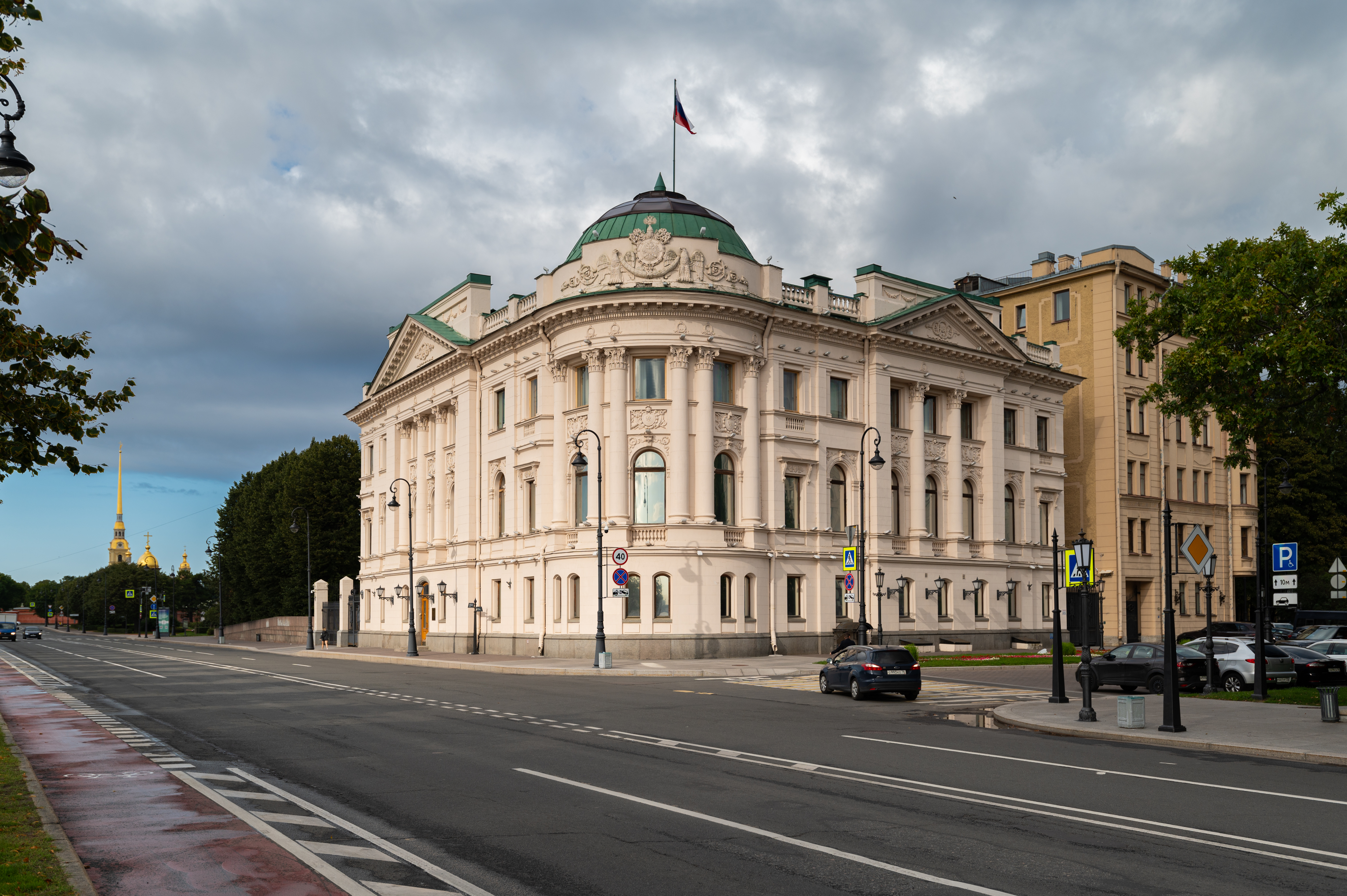 Back
Back
Palace of Grand Duke Nicholas the Younger

St.Pererburg, Petrovskaya nab., 2, building 1
Palace of Grand Duke Nikolai Nikolaevich the Younger on Petrovskaya naberezhnaya (house №2).
Nikolai Nikolaevich, the grandson of Nicholai I, conceived its construction after his marriage to the Duchess Anastasia Nikolaevna Lichtenberg, -Princess Chernogorskaya, who was called Stana in the family.
A place for the house has been chosen very well. Just a little before the permanent Trinity Bridge/Troitsky most, which connects Petrograd island/Petrogradsky ostrov with the Palace Embankment/Dvortsovaya naberezhnaya, was opened. At the same time, the southern coast of the island was landscaped, turned into a granite Petrovskaya naberezhnaya. It was here, on a site overlooking the Summer Garden/ Letniy Sad and the old houses on the other bank of the Neva, where a new palace was decided to build. It is obvious that the Grand Duke had purchased this site before the work of Petrovskaya naberezhnaya improvement started. He was the only one who did not agree to provide his territory for the storage of construction materials. Nikolai Nikolaevich was offered neighboring, larger allotment, but he did not agree. The builders had to build embankment directly from waterside, avoid the Great possession.
The architect A. Hrenov, who built in 1909 nearby six-stored profitable building (Petrovskaya ulitsa, 3), designed the palace. The construction of the Grand Duke Nikolai Nikolaevich the Younger palace lasted from 1910 to 1913. The main facades from the Neva River/reka Neva and Trinity Square/Troitskaya ploshchad sides were decorated in the neoclassical style and the yard facade and the main entrance-in the Art Nouveau style. Marble, Karelian birch, gilded bronze and stucco used for trimming interiors. Front staircase leading to the second floor allowed entering the Dining room, Living room and Study. The third floor has contained living quarters decorated in the Empire style. The main part of the furniture for the palace was carried out at the factory of F. Meltzer.
Nikolai Nikolaevich was one of the first who gave his house to Grigory Rasputin and contributed to his advancement at court. Grand couple did not live in the residence for a long time. In 1914, with the outbreak of World War I, Nikolai Nikolaevich went to the front as the chief commander of the Russian army. After the February Revolution of 1917, the Grand Duke moved from St. Petersburg in his Crimean estate Chair. In 1919, he and his family left Russia.
From February 1917 to May 1918 in the mansion housed the Investigative Law Commission All-Russian Central Executive Committee, then – the Commission of Inquiry Military Revolutionary Committee. There one of the first revolutionary tribunals sat. The first session of the Tribunal took place on 28 November 1917. One of the leaders of the Cadet Party Countess S.V. Panina and former leader of the extreme right-wing monarchists V.M. Purishkevich were judged. The first got public censure, and the second - a small period in prison.
In June 1918 Palace of Grand Duke Nikolai Nikolaevich was handed to the State Institute of studying brain and mental phenomena. His head was V.M. Bekhterev who worked here until 1927. In 1954, there was the Institute of Semiconductors founded in the palace, and later - the Limnology Institute of Academy of Sciences of the USSR.
After the restoration in 1985, there appeared a new entrance to the palace from embankment side. The building became the Wedding Palace. In 2000 here the residence of the Plenipotentiary Representative of RF President in the North-West Federal District was located.


